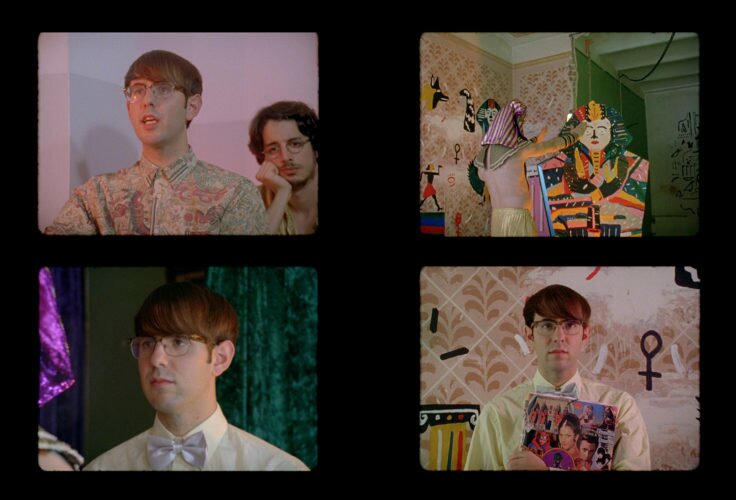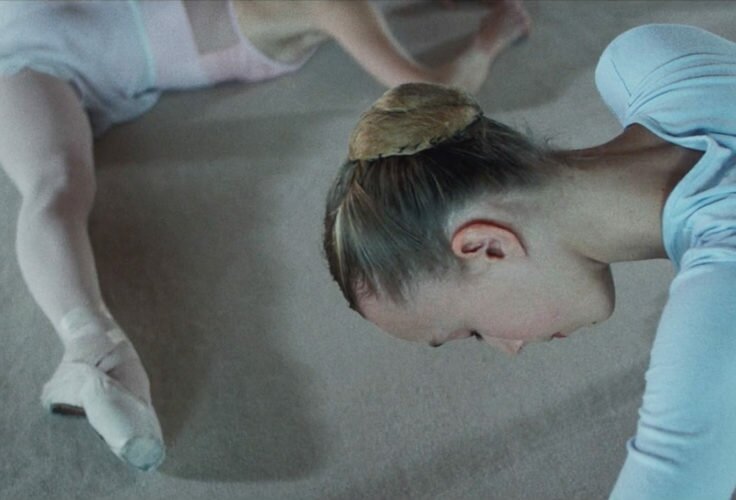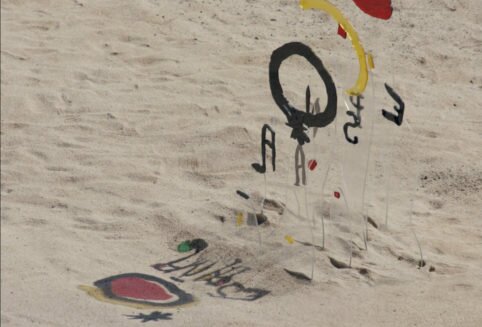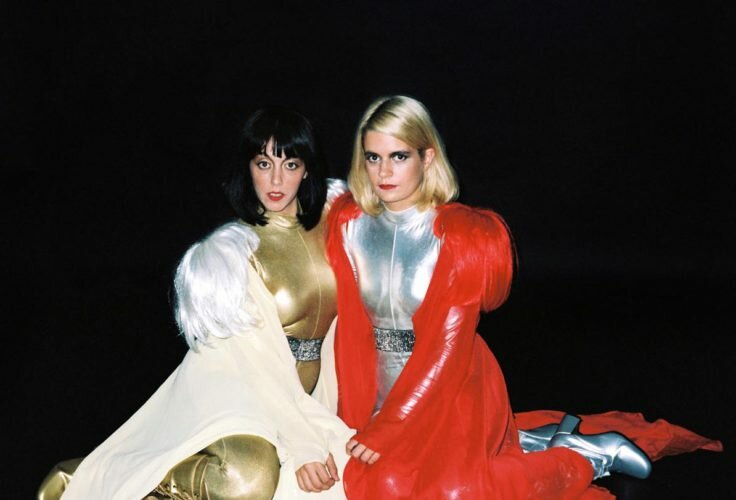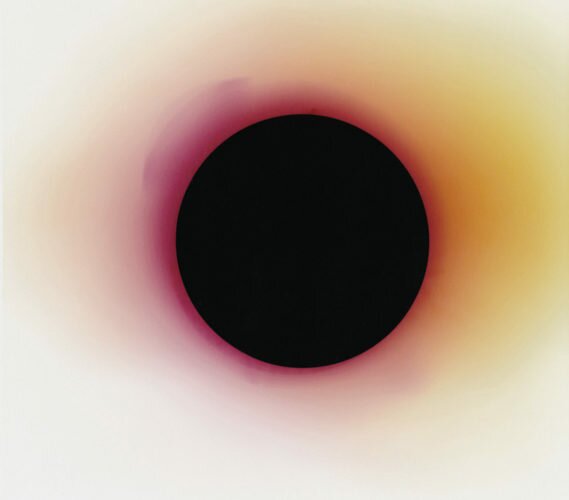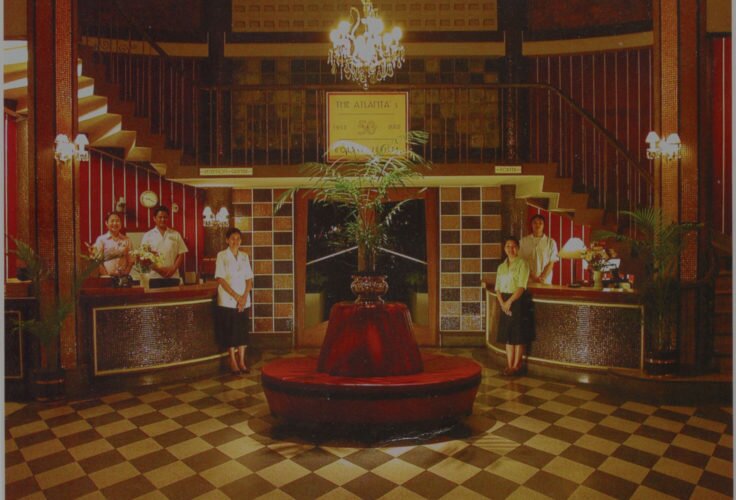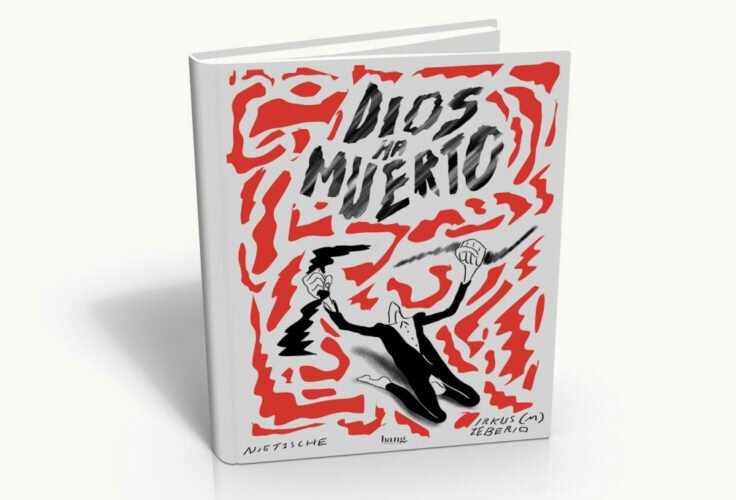Now that everybody discusses whether Mulholland Drive is this century’s best film or not, Gerard Casau celebrates the thirtieth anniversary of another Lynch: Blue Velvet.

SPECIAL
READING AND AUGUST
Text by Gerard Casau.
SMALL IN JAPAN
BUYING RECORDS IN THE LAND
OF THE RISING SUN
8.
When people are on holiday they read more about… holidays. In this case, we invite you to discover the trip that Gerard Casau made to Japan, tracing, whenever he had the chance, a very particular route with a musical excuse: Japan’s record shop map. A lost in translation experience in (imprudently?) long report form. But who says long texts are not meant for the web? Some non-reader, I bet you!
Ryuichi Sakamoto/Yellow Magic Orchestra. Merzbow. Boris. Guitar Wolf. Polysics. Boredoms. Nobukazu Takemura. Otomo Yoshihide. Ringo Shiina. I think that’s it. Up to very recently, that was the only Japanese representation in my record collection. All of them artists relatively well known who have visited our stages more or less frequently, and whose albums have found some kind of distribution around here (the exception being, probably, Ringo Shiina; paradoxically, the most mainstream and popular one in her country). It goes without saying that this list (adding a few more items) represented also my little knowledge of the Japanese musical scene. So when my girlfriend and I decided to stretch the budget and choose Japan as our holiday destination, I started salivating before the perspective of visiting the country’s record stores and discovering all sorts of Eastern treasures.
Before I go on, I’d like to make clear that the purpose of the trip wasn’t at all purchasing vinyls. I wasn’t one of those people who jump on the plane with an empty suitcase to fill it with plastic stuff (although I’ve got to say that, once there, we had to purchase a trolley to take back all the trinkets and matcha-tea-flavoured snacks we acquired). I didn’t follow a master plan to move around the different shops either. And I didn’t even think of writing about it. With all this I mean to say that you might find much more texts on the Internet, written by people who have dug the shelves in each shop for hours. So don’t expect to find here a practical guide, or spectacular anecdotes. What follows is, simply, a report written by someone who visited a series of places that should be familiar to him but in which, for the first time in years, he felt somewhat disoriented.
Kyoto song
The first week of our trip we had our operations base in Kyoto, probably the most balanced and least overwhelming of all Japanese metropolis. The many possibilities offered by its little streets, temples and parks don’t exactly invite you to waste time inside record stores. But still, I can’t help doing a quick search in Google, and the first result I get is Jet Set, a shop located at Kawaramachi-dori, one of Kyoto’s main commercial avenues; but not at street level, it is, as it’s the usual thing in Japan, on the top floor of a building (a verticality that here would find its most relevant equivalent in Madrid’s Rotor). When the doors of the lift open, we’re saluted by the company’s logo (very similar to Pan Am’s), and our eyes take a while to get used to the light of a space characterised by white furniture and colourful posters all over the walls. Despite the nuclear atmosphere of the place, the shop feels quite cosy, maybe thanks to its generous soul section. They also sell lots of hip-hop and jazz vinyls. But my priority is getting to know the local scene better, and that’s where the trouble begins.
Logically, musical classifications, as well as album titles, are written in kanji, Japanese sinograms. This, to the eyes of a Westerner not familiarised with the language, makes the shelves an incomprehensible maelstrom, and trying to locate a concrete title is virtually impossible. Despite something so obvious, and probably out of sheer stubbornness, or shame to admit those graphs are an unsolvable enigma, it’s inevitable to spend a few minutes observing the spines of the albums very closely, as if by staring at them they were to do some kind of magic transformation and be readable in Roman letters (what they call over there ‘romaji’). In any case, when one is tired of this stupid pantomime, there’s no other choice but to ask for shop assistants’ advice. And here comes the second great obstacle: except for a few exceptions, the Japanese speak no other language than their own. Something that is quite OK, but… how easy it is for anti-globalisation convictions to tumble down in situations such as this! The model of ‘conversation’ I made in practically all the record stores I visit can be summarised by the terms ‘Japanese’, ‘pop’, ‘noise’, ‘loud’, ‘estrident’ (like this, in Catalan, because in those moments one is keen to believe his mother tongue might have a magical phonetic similitude with Japanese); all of this, of course, seasoned with a great deal of gesticulation… At least, I didn’t degrade myself so much so as to use the lethal word, ‘authentic’. But in this first try I make the mistake of keeping an open mind, and when the assistant asks me what kind of music I’m looking for, I answer: ‘Anything’. So he brings back a pile of sixties and seventies Japanese bands that play mostly generic and soft instrumental tracks. I guess they’re not bad… But that isn’t exactly what I’m looking for. After the pitfall of rejecting what you’ve been offered, trying not to be offensive despite not being able to communicate, the efficient workers at Jet Set decide what I’m into is modern stuff and the latest thing, and so show me a 4-vinyl set with several industrial live sessions (very interesting, but also very expensive), and a 12″ by M/D/G, alias of young producer Kazumichi Komatsu, who usually signs his albums as Madegg but whom, in this occasion, has dismantled his artistic name to defend a highly rhythmic EP in which he seems to be describing the motion patterns of a robotic organism, in opposition to the clicking and dreamlike stuff he usually does (all this, obviously, I researched and learned later on). I buy it and, since I’m at it, I also get a mini-LP by newbies , which seem very moving in their bedroom lamp intensity. So that’s it! I can breath again: I’ve bought my first albums in Japan.
While we say goodbye with the customary bows, Jet Set assistants give me a practical map of Kyoto’s record stores classified according to their specialisation. A true life-saver that a couple of days later takes me to crowded mall Sakuranocho, where, after going round in circles for a while, I climb up some steps (I had forgotten to look up, of course!) and find Parallax Records: a tiny space chock-a-block with albums devoted to anything ranging between avant-garde improvisation and industrial drill. Even though the conversation is inevitably broken, the shop owner’s eyes shine when I pronounce the name Esplendor Geométrico. And although I would like to take home the whole shop, my budget only allows me to buy a mysterious green-coloured envelop called Disco-Mortem containing three 7” with tracks by champions of noise and darkness like Grey Wolves, No Festival of Light or Merzbow. Parallax-san tempts me with a rare vinyl by the latter, friendly lowering the price, but I decline because if I start saying yes in no time I will have drained my whole bank account. At a few metres’ distance, in next-door Teramachi-dori mall, I find Poco a Poco, a small but well-stocked shop full of second-hand items (without a doubt, the best way of buying records in Japan, since the variety on offer is huge, their state is usually optimal, and prices are considerably lower than new ones’) and where as soon as I enter I find one of John Oswald’s biggest plunderphonic apotheosis: . Although there’s only one other client inside the shop, immersed in his own search in a faraway tray, I grab the CD so no one can steal my finding (which, apart from rare, is very cheap). This time, I go up to the owner directly and ask him whether he can recommend something (in case you’re wondering: despite the name of the shop, the owner has no Hispanic connection whatsoever, and no knowledge of the language either). A bit overwhelmed, the man starts going around the shop; it would almost give the impression he doesn’t know what he’s looking for, but then he starts selecting vinyls from different boxes, as if he were selecting the best pieces of fruit, and places them next to the player. After a couple of failed attempts (I must really look like someone who loves the dullest and most inoffensive lounge), a voice that it’s at the same time childish and provocative fills the room, surrounded by guitars, drums and jet engine keyboards. Something inside me ‘clicks’. I’ve just discovered Kahimi Karie and her hit , and I instantly fall in love with it. Later on I will learn that the singer was Cornelius’ girlfriend and collaborator (in fact, part of her discography appeared on Trattoria, Cornelius’ label), and that throughout her multilingual career (sung, above all, in French and English) she has undertaken fruitful artistic collaborations with Philippe Katerine, The Olivia Tremor Control, Otomo Yoshihide, Jim O’Rourke and Momus, practically co-author of K.K.K.K.K., the album the owner of Poco a Poco is now playing for my pleasure. But all that doesn’t matter now. I don’t even want to know whether the rest of the album is as good as the brilliant first track. What I’ve heard is enough: I’m taking it.

1. Jet Set Records: Style and smartness.

2. Map of the sounds of Kyoto (with targets marked with a pen).
Illustrations by

3. Parallax Records: The noise corner.
A pink-coloured monster
Kahimi Karie will end up being a usual suspect in my following record-buying excursions around the country, and I will go back home with several of her albums and EPs, without having heard almost nothing besides the above-mentioned hit on chairs. This outburst is due, in part, to the fact that buying records in Japan is quite similar to attending a huge and nice party where you have no friends, and so (at least if you don’t have a very developed socialising gen) you end up joining the few people you superficially know and who in those circumstances become your closest friends. Thus, in almost all the shops I visit I check anything they might have by Karie, or by Ringo Shiina, almost sickeningly, as if all of a sudden I were their biggest fan on Earth. I discovered Ringo some years back, when surfing on the Internet I saw her album Shōso Strip in a Top-10 best albums of 2000 list. Immediately, it caught my attention the exaggeratedly over the nature of the music made by that young girl (she was 22 when she published that record): each corner of her songs was full of instruments and stimuli; a kind of horror vacui with never-ending hooks, but which made pop sound menacing, on the verge of collapse. A friend brought me her album directly from Japan, but after that I never followed the singer’s evolution. Somehow, I let the fascination for the excess in that work feed my ideal conception (although absolutely distorted and ignorant) of j-pop: a sweet and aberrant territory or, remembering the title of the first Suehiro Maruo manga that fell on my hands, ‘a pink-coloured monster.’ This definition could be perfectly applied to , one of the latest sensations of the scene, although in this case the visual imaginary of bizarre stuff and sugar puffs seems much nicer than some of their songs, much less imaginative than should be desirable. In any case, what I did find curious is that, (she was on the cover when I visited the city) she defined her style as ‘cute’ with same conviction and seriousness as another band would say ‘post-rock’, for instance. That might be due to the (intermittent) attraction one can feel towards j-pop, thanks to the absolute professional conscience about the execution of an aesthetic and a sound apparently childish, but which turns tracks by bands such as, say, Perfume, into merciless dance factories. During our stay, the huge screens that illuminate Japan’s main commercial streets incessantly bombarded us with , her latest maxi-single (yes, in Japan they still use this format), which is probably one of the sweetest songs by Hiroshima’s now veteran trio. But try listening to their most . If they don’t stick to your brain for days, it must mean that your taste is considerably more sophisticated than mine. I’m sure has the same problem.
In all, during my trip I realise that Perfume’s aerodynamic choreographies mark, by now, my tolerance limit when it comes to Japanese mainstream, and that most of my elections have more to do with artists like Karie and Ringo, defined by a clear authorship and control over their careers. This might have to do with the tricky situations in which, without noticing, the j-pop industry can put you in, with AKB48 as the extreme example. This band was born from the dream (more lucrative than wet, I think, and hope) of a middle-aged man, producer Yasushi Akimoto, who wanted to form a big girl band that had its own theatre, located at the Akihabara neighbourhood (inside the building of hyperbolic Don Quixote bazar, where we purchased a grill to make takoyaki which was as cheap as useless), that would turn into a place of pilgrimage for fans to regularly see their idols, creating a mirage of proximity. In the decade that has passed since its launch, the roster of the forty-eight original singers has been regularly increased and renovated, adding even fresher blood (or, directly, teenage blood), and the girls, apart from singing, must happily pose for pictures that clearly blur the borders between innocence and libido, an aesthetic line known in Japan as ‘gravure’. And even if there’s nothing legally punishable on it, one can’t help thinking that something went wrong along the way. Going one step beyond, the rigid rules that dictate the private lives of the AKB48 (in case the illusion of their fans is destroyed by finding out that their favourite singers breath outside the stage and their bedroom fantasies) took one of its singers, Minami Minegishi, to be degraded in the hierarchy of the band when it was made public that she had spent the night at a boy’s house. Her answer came in form, where she asked for forgiveness for the ‘treason’ to her followers, with tears in her eyes and the head shaved as a sign of contrition. Deep down, all these spines are also featured in Western show business agreements, but, as happens with almost everything, in Japan they end up multiplied by one thousand… By the way, I still have to hear an AKB48 track that doesn’t sound like disposable pop mash.

4. Kahimi Karie: I fell in love.

5. Perfume: Dance factory.

6. Ringo Shiina: Over the top.

7. Tower Records: The next level.
Tokyo Drifter
After this aside, let’s go back to the shops. Kyoto is a wonderful appetizer, but the big stuff is really in Tokyo. Fundamentally because the mad beat of this huge city makes you to compulsively buy anything, no matter what: the most important thing is to consume, be it at the top of a building or in the labyrinth-shaped malls that await you at the exit of several underground stations, almost like subterranean cities in which one could live the capitalist dream without ever seeing the light of day again. When it comes to music, the most impressive place is probably the flagship store of Tower Records (the former super powerful American chain that had to close down in its own country, but which is still big in Japan) in that hyper-populated absurd nest called Shibuya (even more crowded when you visit it, as I did, during Halloween: something supposedly funny that I will never do again). One goes into the bright eight-floor building, each devoted to a different music style, like the character of an old videogame. The goal is climbing up the levels, but strength becomes weaker as you go up, until you’re knocked down by a band of lively girls doing a gig on the seventh floor before a devoted (almost entirely male) audience and with a volume equal to a Manowar concert. Game over.
Tower Records might be the most impressive, but I was more inclined towards Disk Union, the chain expanding its kingdom of melomaniac terror around the whole Shinjuku area: apart from their own building, they have a series of satellite stores around it, each with a definite theme. In some cases, their distribution can puzzle you (I’m still wondering why Elvis Costello’s albums are in three different shelves), but the variety on offer is dizzying and their back catalogue seems endless (one afternoon I buy all my beloved Ringo Shiina’s singles and albums in the shop; a couple of days later I go back to the same shop to check something else and the singer’s section is filled up again… with completely different records!). In its shop devoted to the power of metal I’m surprised not to find any long hair dudes or dressed in black, but perfectly suited executives who go up to the cashier with their Sleep and Darkthrone albums under the arm. High on the drone, I put in the basket Sunn O)))’s Japanese editions, with an extra record, and I push my luck by choosing the cheapest Japanese heavy album I can find, signed by screaming Misako Honjoh: it starts with a version of All the Young Dudes, and that seems enough guarantee. This kind of blind confidence is also compulsory not to become mad at the record section, mostly when you’re faced with the huge amount of stock at a place like Recofan, in Shibuya. A flashy cover or a familiar name (remember the comparison with the party earlier on?) is enough to choose one album over another: seeing David Sylvian on the list of collaborators was reason enough to get a record by Sandii & the Sunsetz, which ended up being . In the end, even if shops allow you to play the albums beforehand, you blindly go on, simply because you’re there. Because that’s the other feeling that possesses you when you’re in a Japanese record store: it’s your ‘only chance’. You assume you won’t be able to visit Mishima, Oé and Ozu’s country every two months, and in Europe finding these albums is very complicated (the Internet is not an option, because prizes are prohibitive). So stuff it! How good does it feel buying music again without knowing anything about it?

8. Disk Union: Masters of Shinjuku.

9. Recofan: Where to start?
Only the Lonely
I’ve left for the end my favourite musical moment of all the ones I lived in Japan. It didn’t take place at a record store, or at a venue. It was at Golden Gai, a fantastic stronghold of tiny and lively bars closed to Shinjuku. By pure chance, we ended up going into one (probably attracted by its name, which reminded us of a Roy Orbison lament: Lonely), finding inside a sanctuary of different pop religions: manga, rock’n’roll and boxing, united in anime series Ashita no Joe (or Tomorrow’s Joe). The place was full of drawings, old band photographs, yellowish newspaper cuts, music live session VHS tapes, baseball balls and all sorts of books. Since we were the only customers, we had the feeling of being inside the owner’s house, a man of around seventy, with a well-looked-after white beard and kind expression, who went by the name of Ronny. Since from the beginning it was clear I wouldn’t be able to have a normal conversation there either, I took some of the albums I’d bought out of the bags to let Ronny know I was a music fan too and pointed at the pictures on the walls to ask him the names of the bands. After a while, he seemed to understand what I wanted, and started to precariously pronounce some names: “Ut-caster… Ot-castu…” Outcast? . “Jagurs…” And so on… He showed a particular devotion for Isao Bitu, , of whom he showed us a huge catalogue of TV appearances while he hummed the songs regressing into some faraway place in his mind. Then, he woke up again and asked us where we were from. When he found out we came from Barcelona, he was very moved and happily grabbed a book filled with illustrations of pigeons, until he found the grey bird so plentiful in our squares and so disgusting (we didn’t tell him that, obviously). The truth is that we barely understood half a dozen words one from the other, but, somehow, it was the moment I felt I could communicate and connect the most in the whole trip. Before we left, I wrote down a couple of names in a piece of paper: and . I hope that if he listens to them one day he’ll find they’re good enough to be put up on his television-altar.




